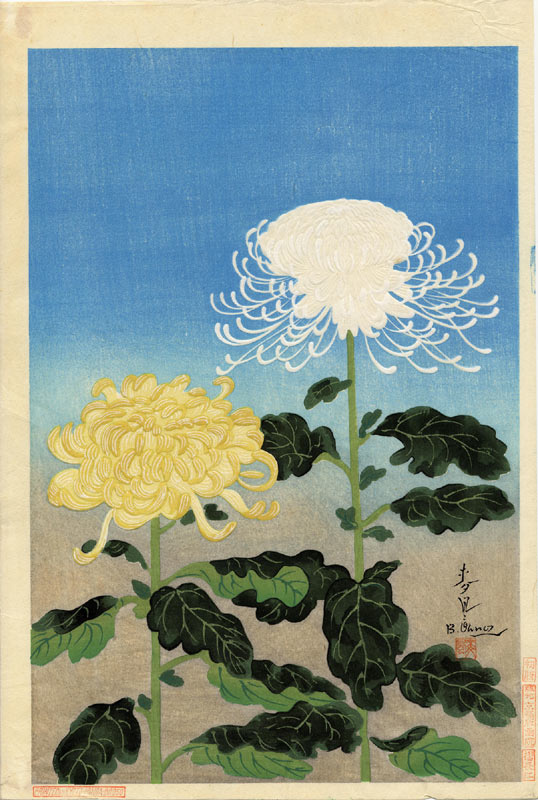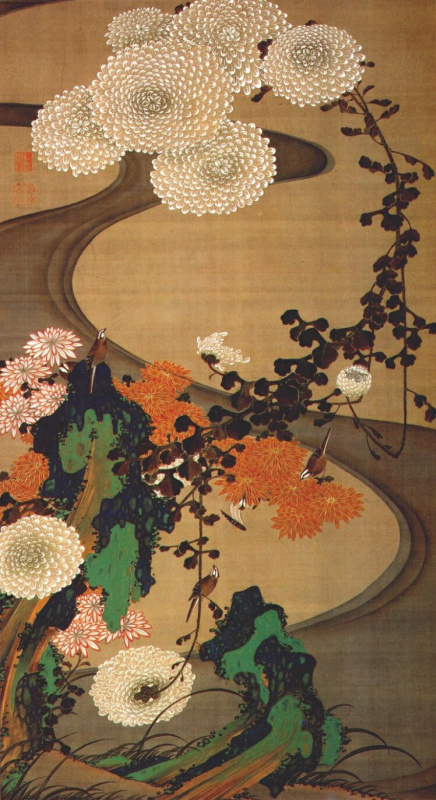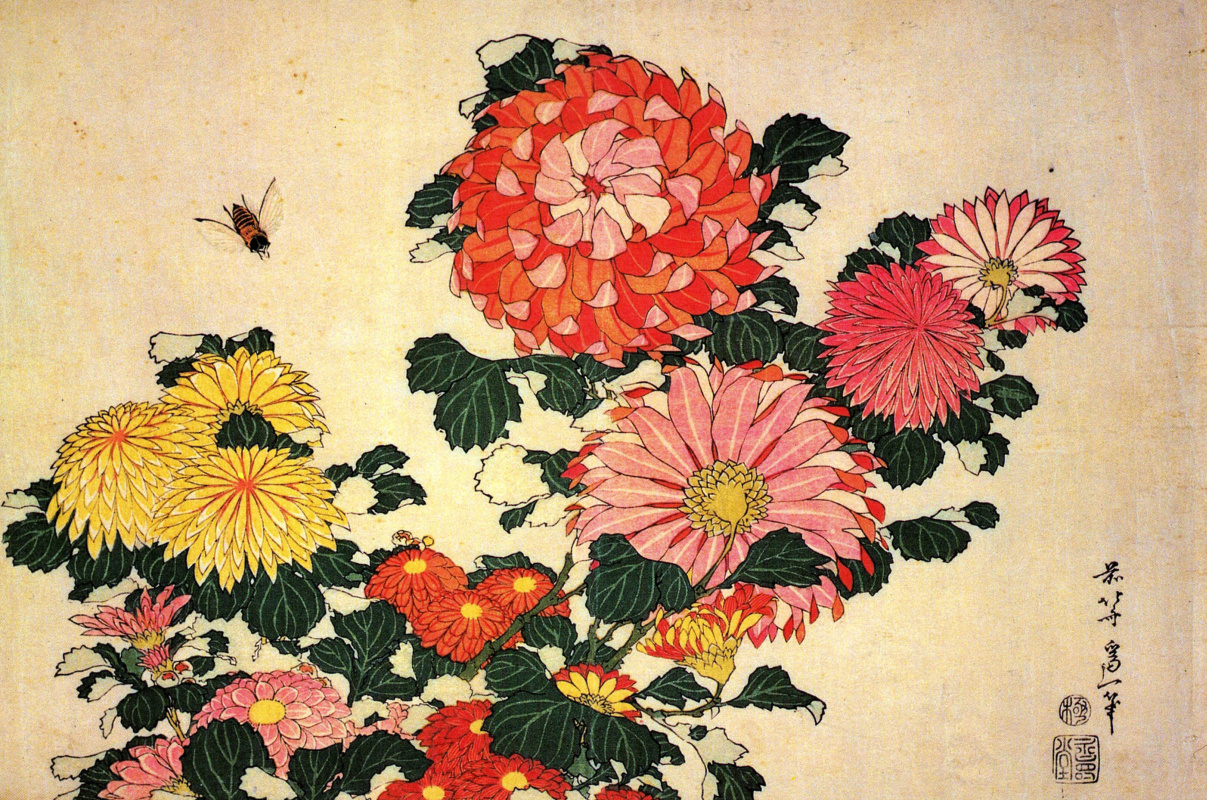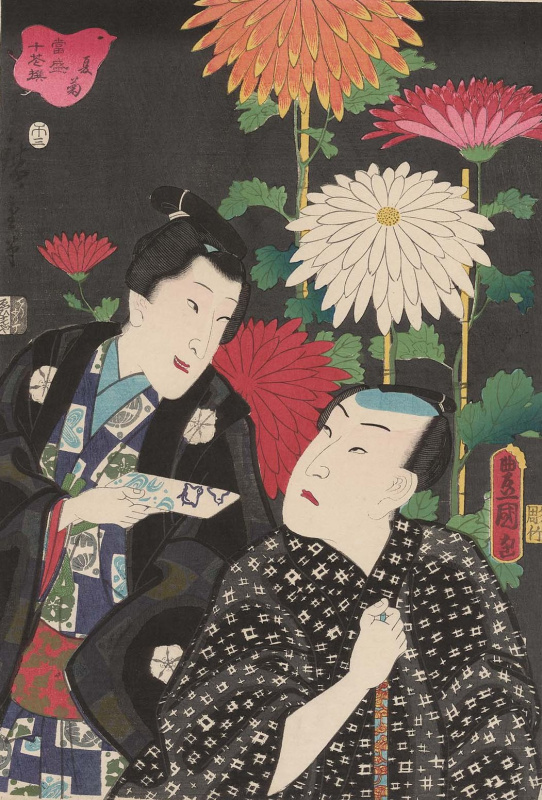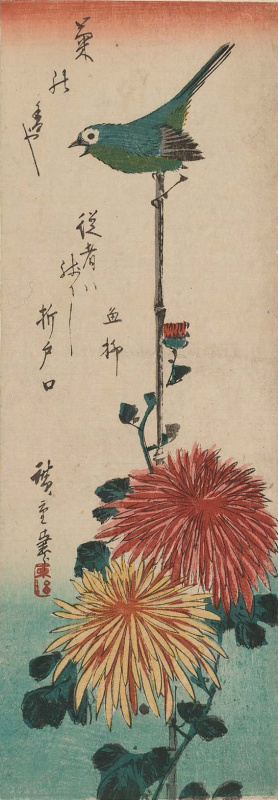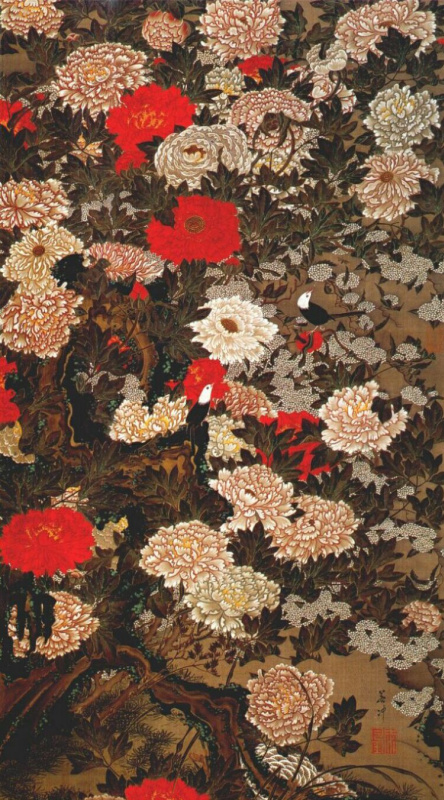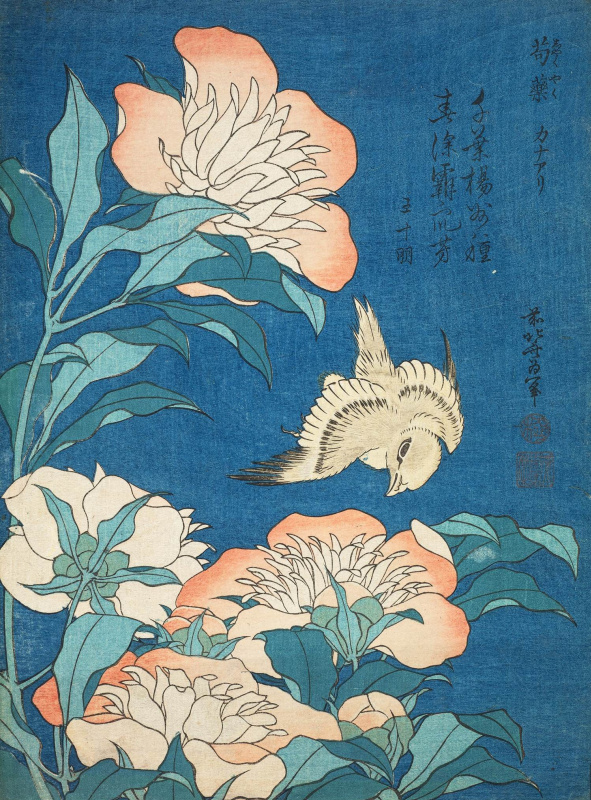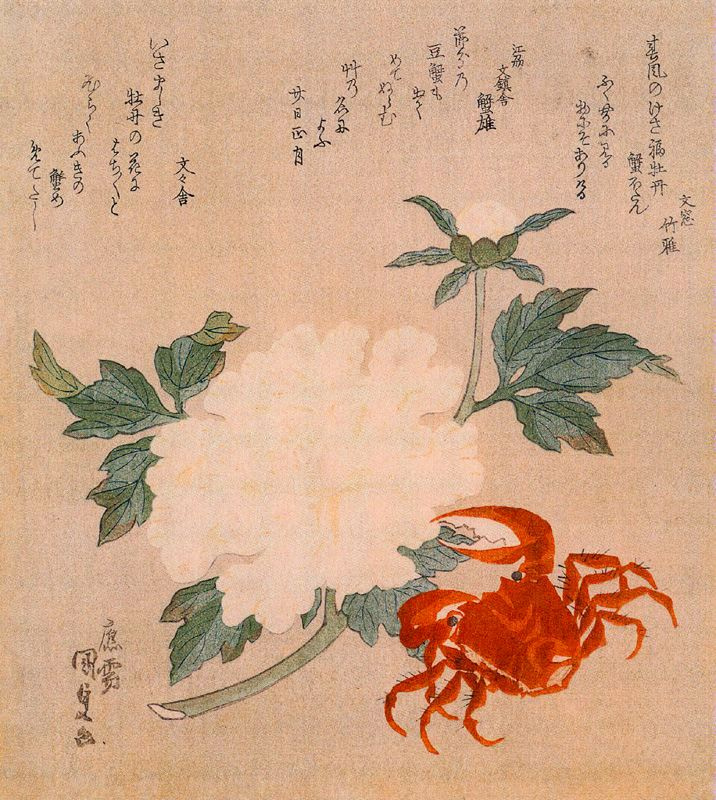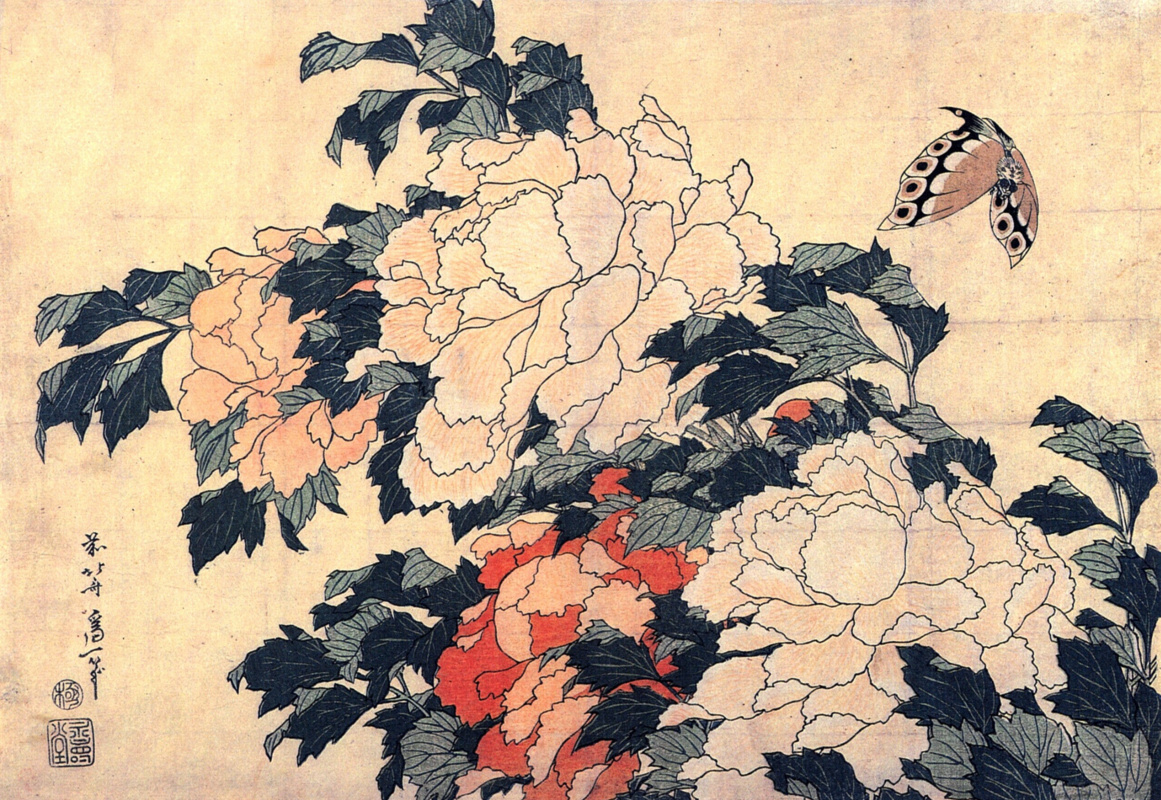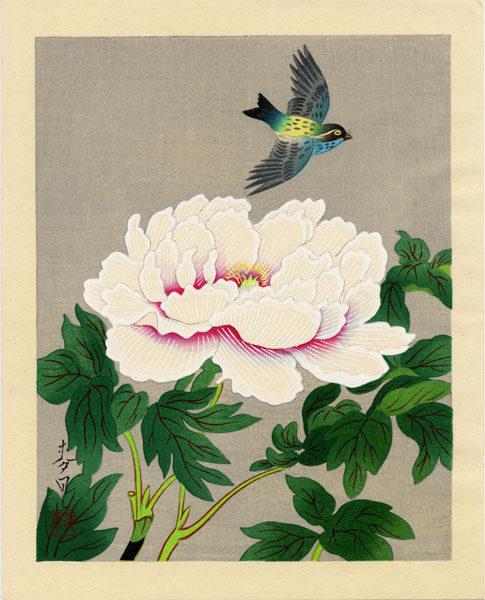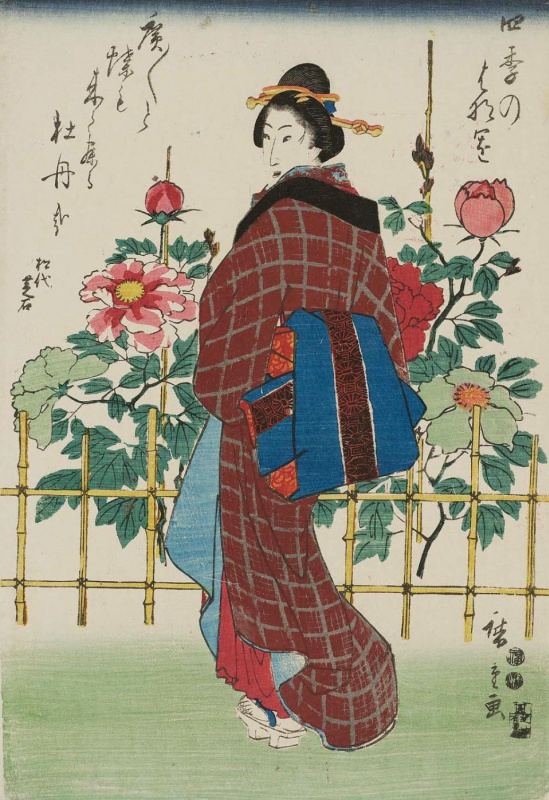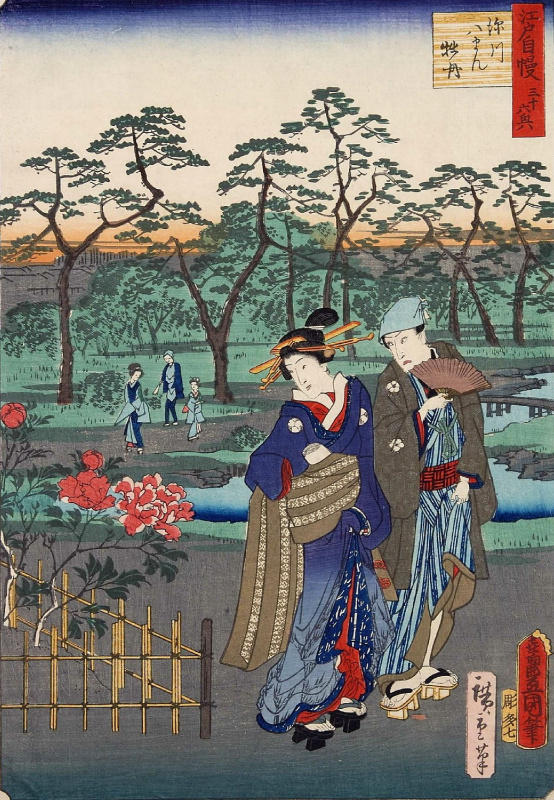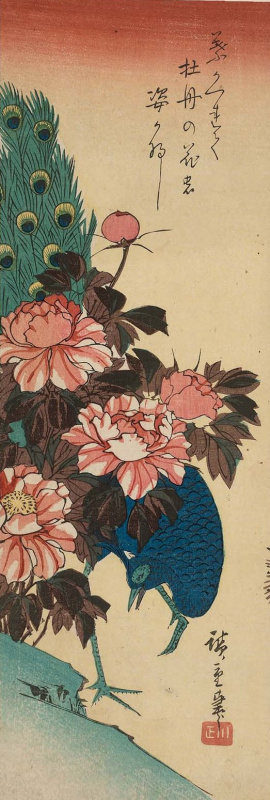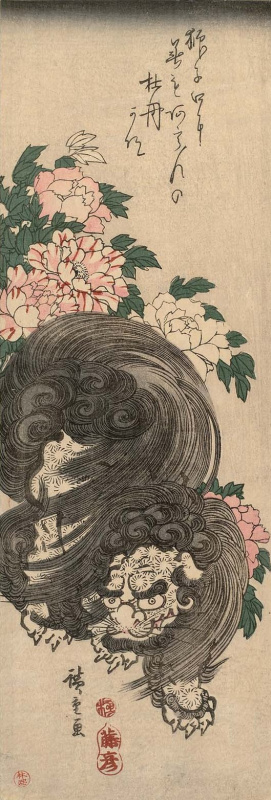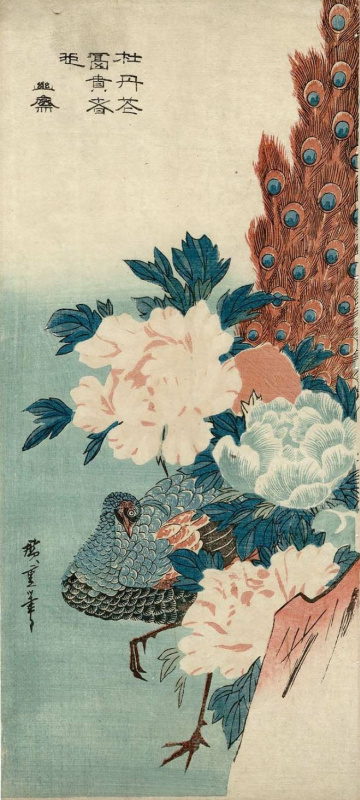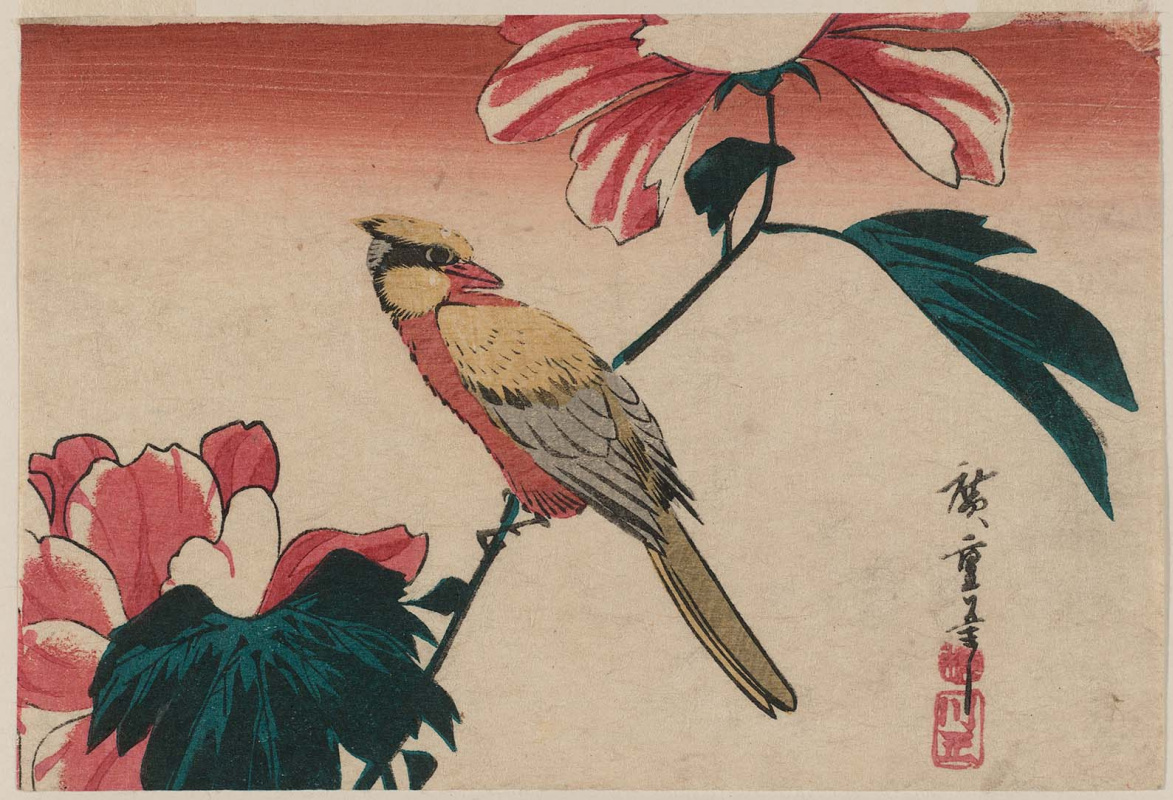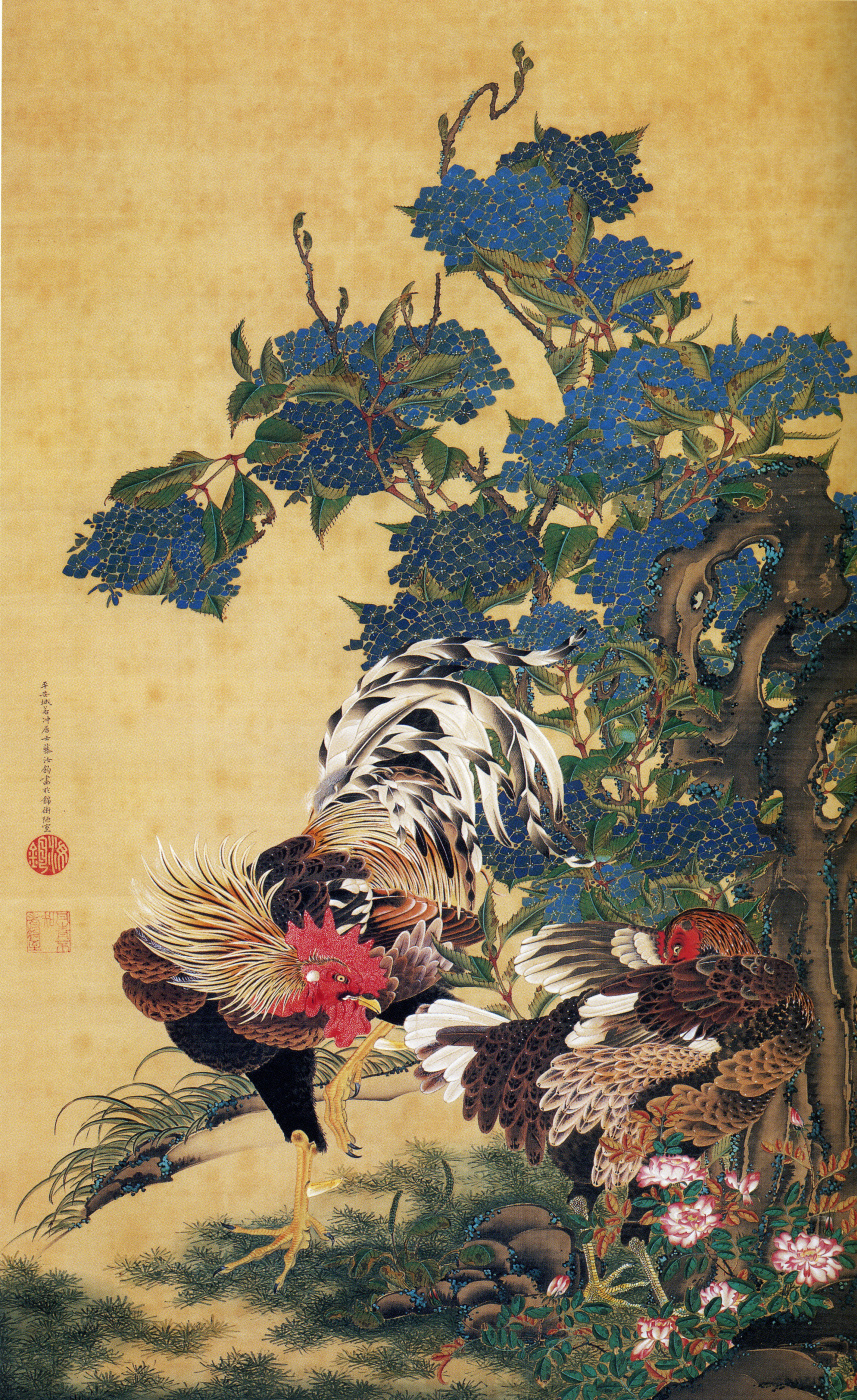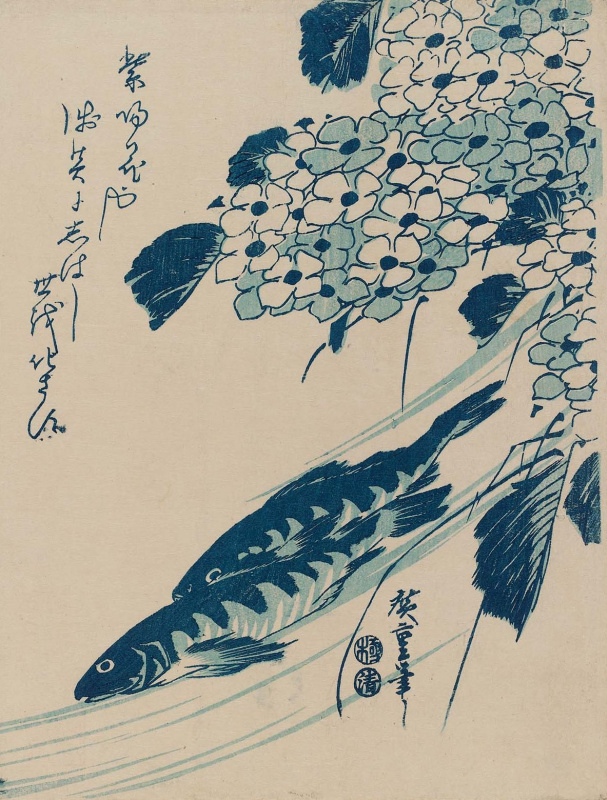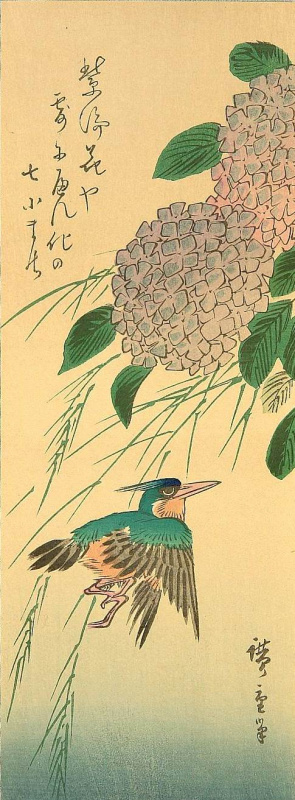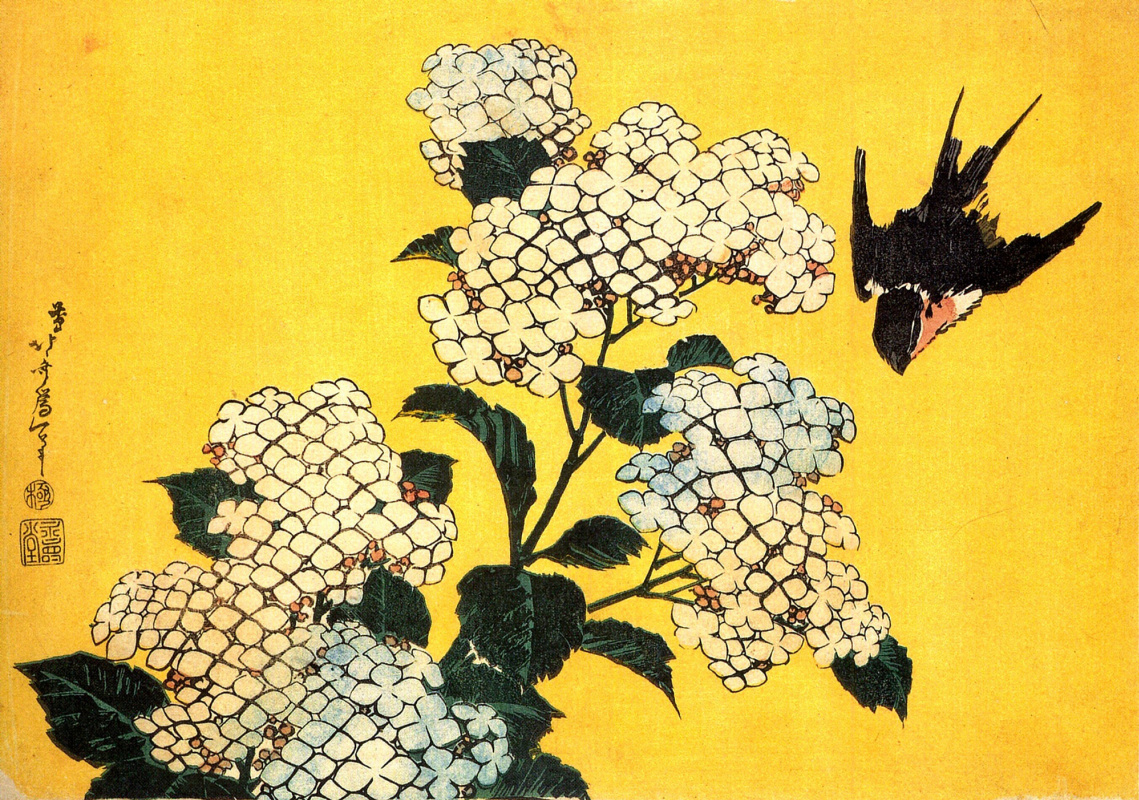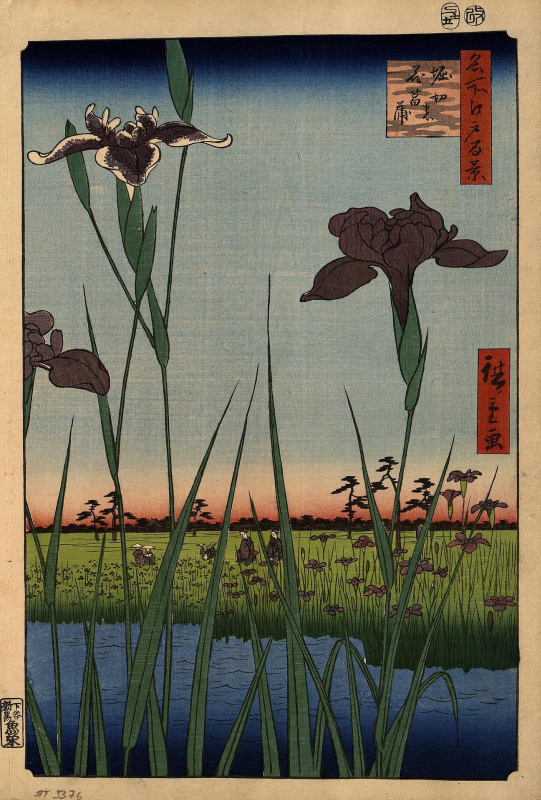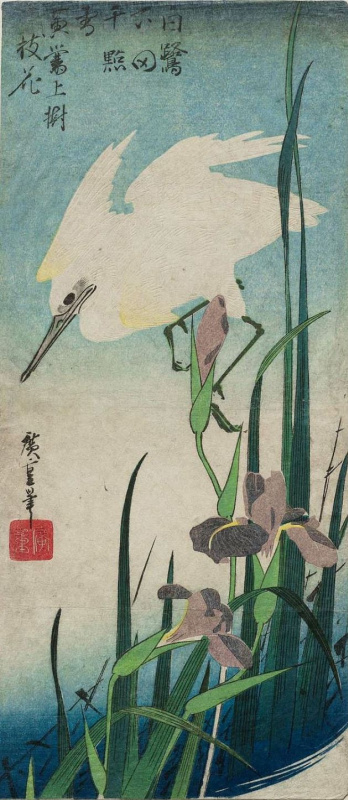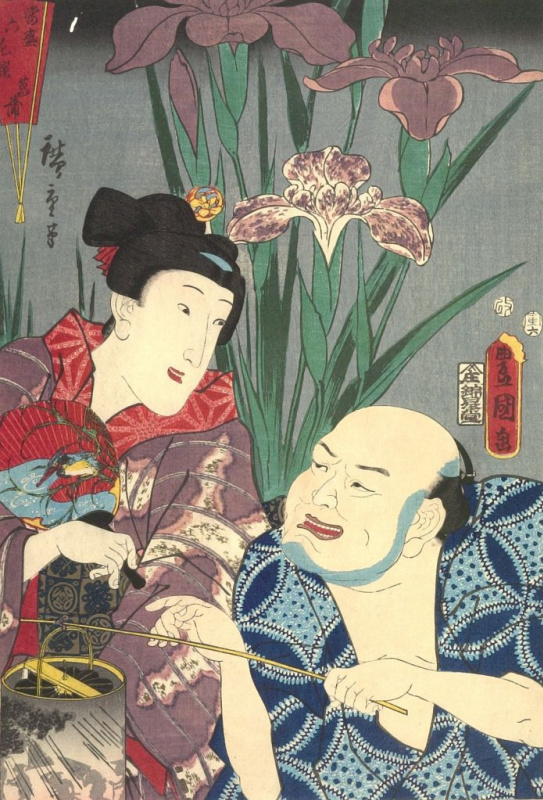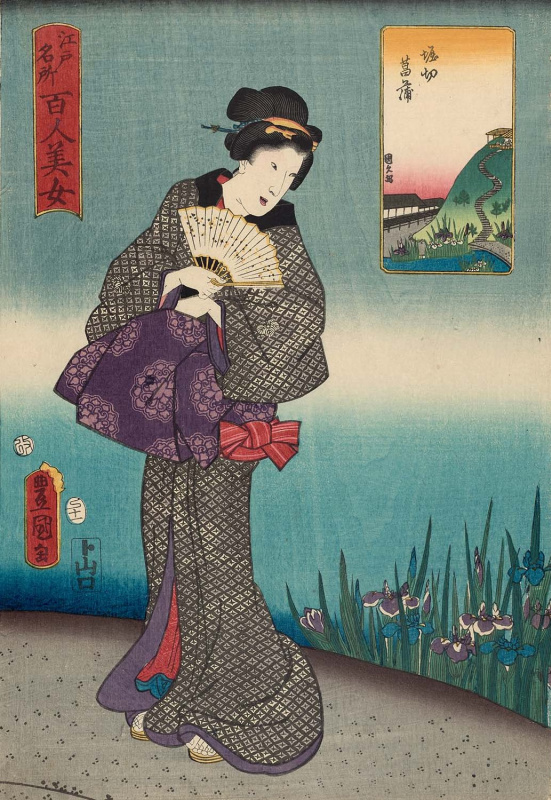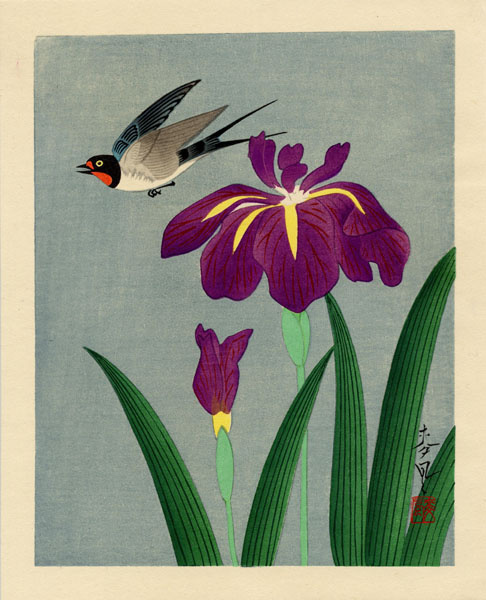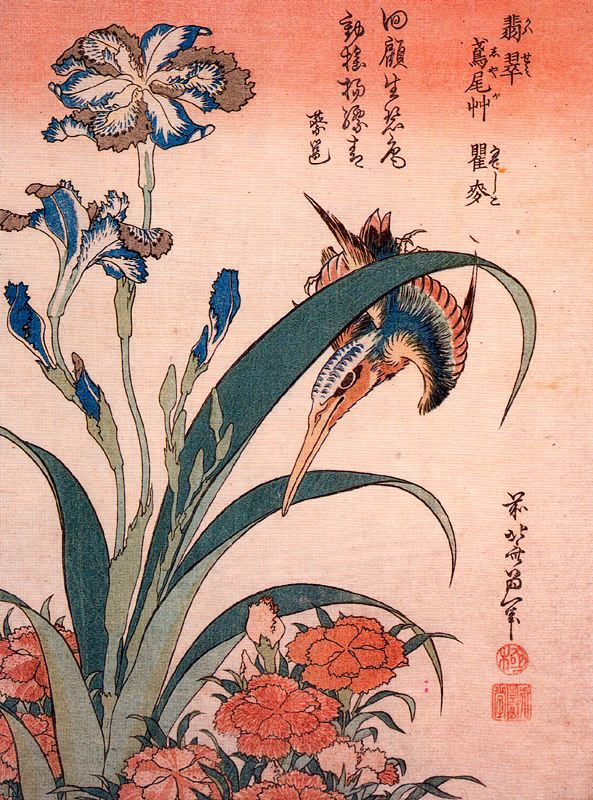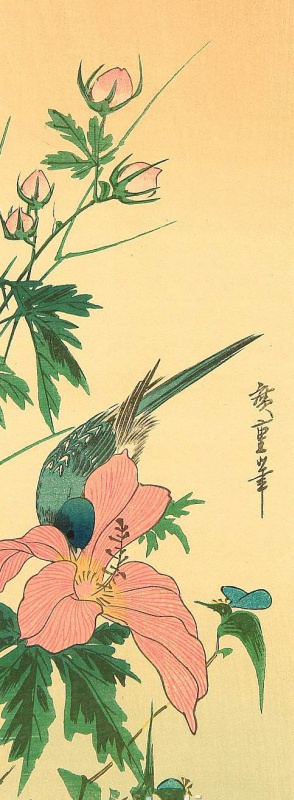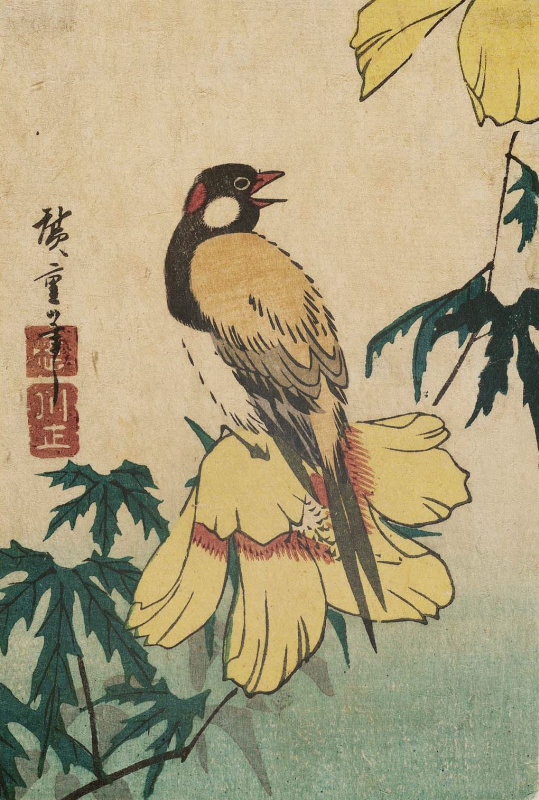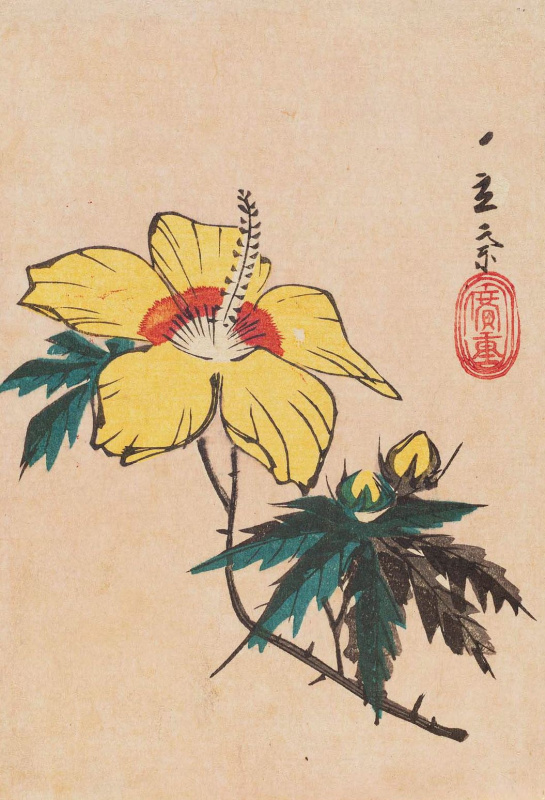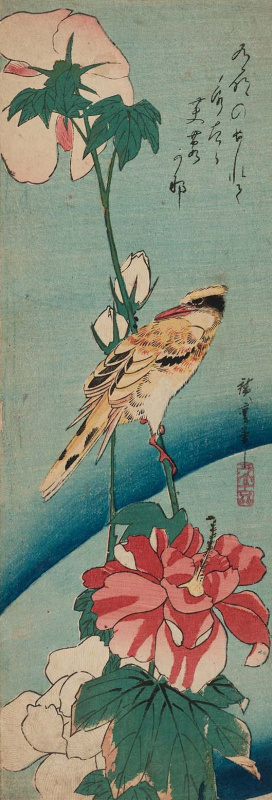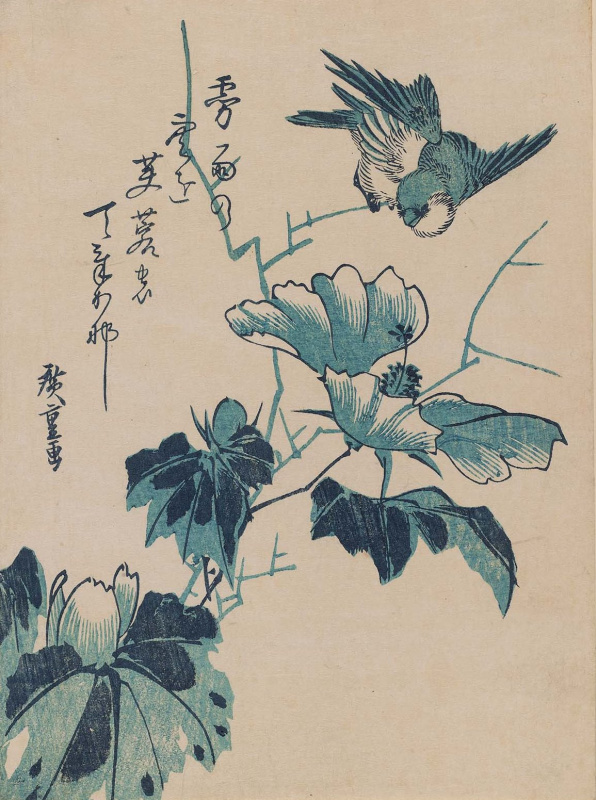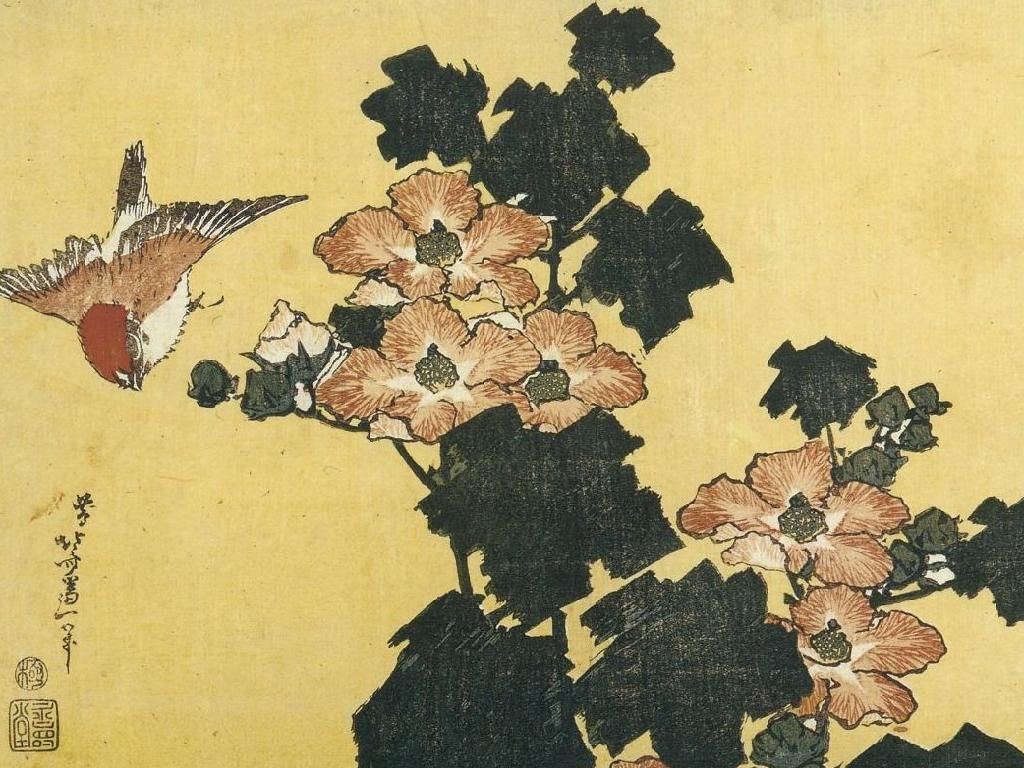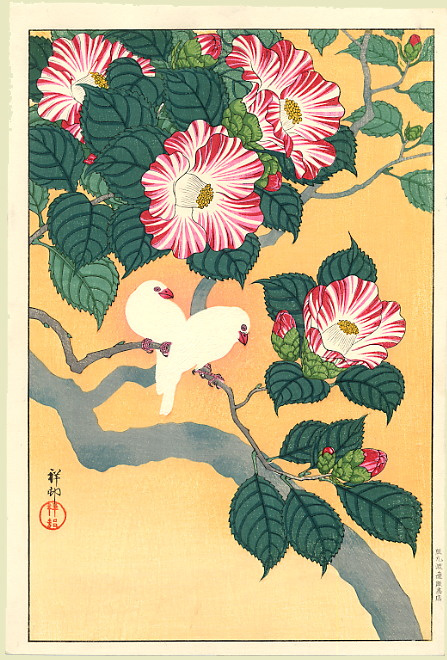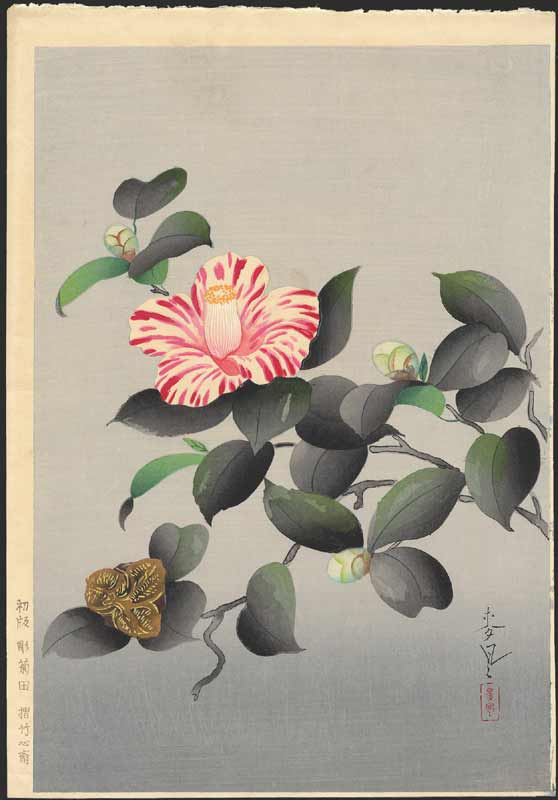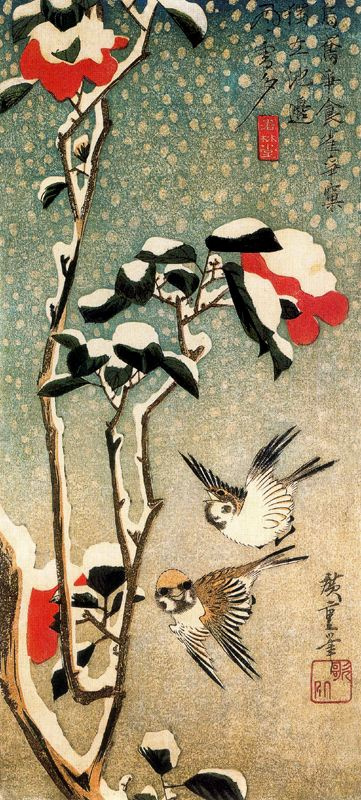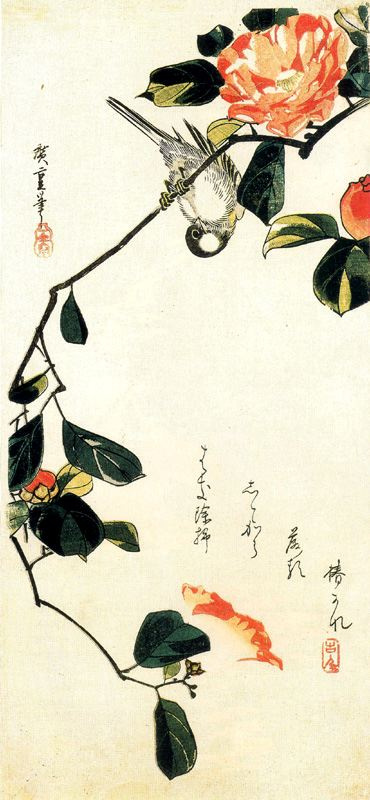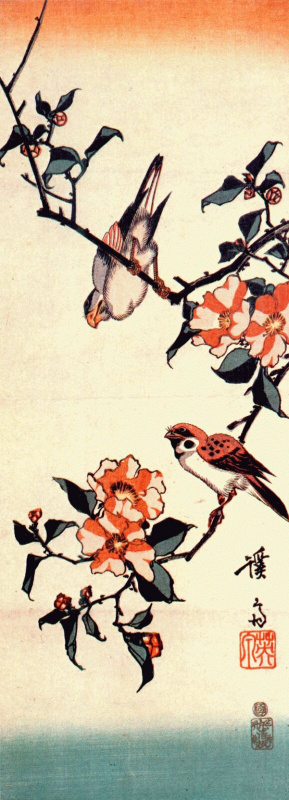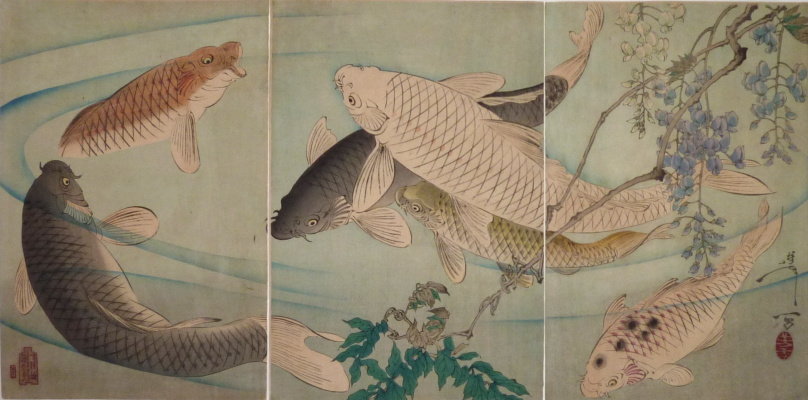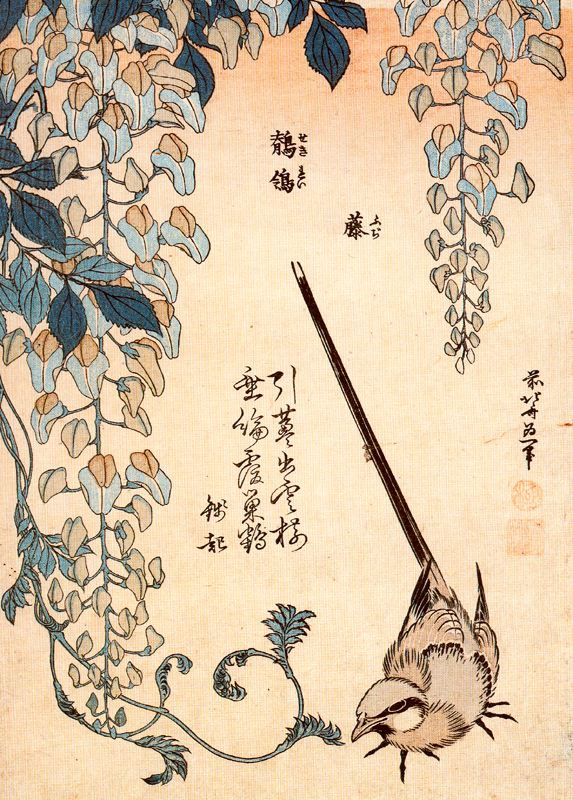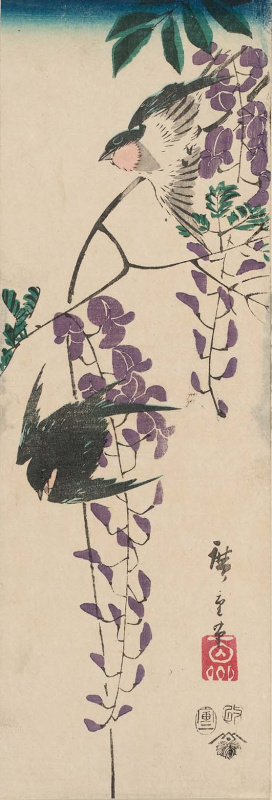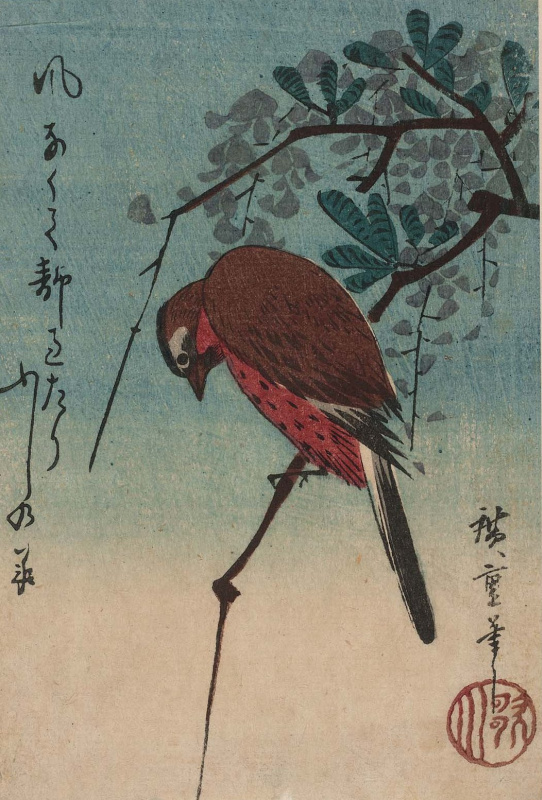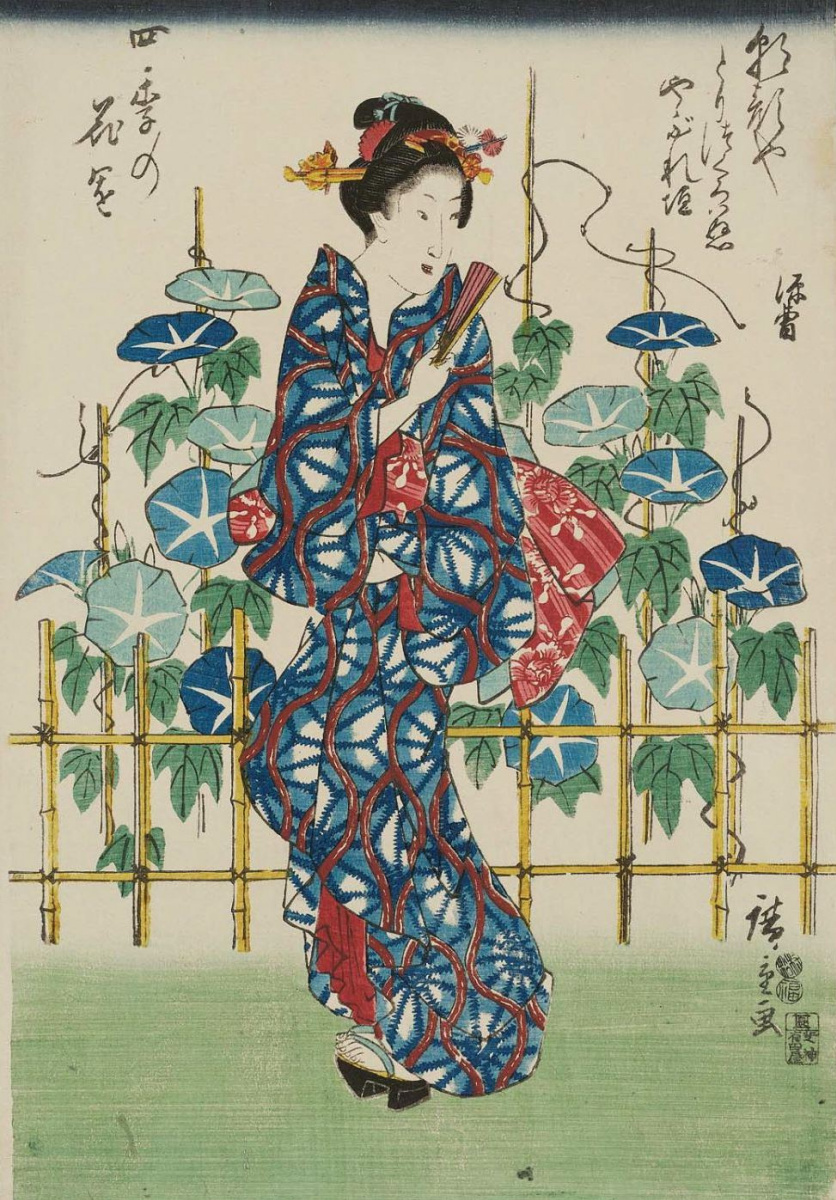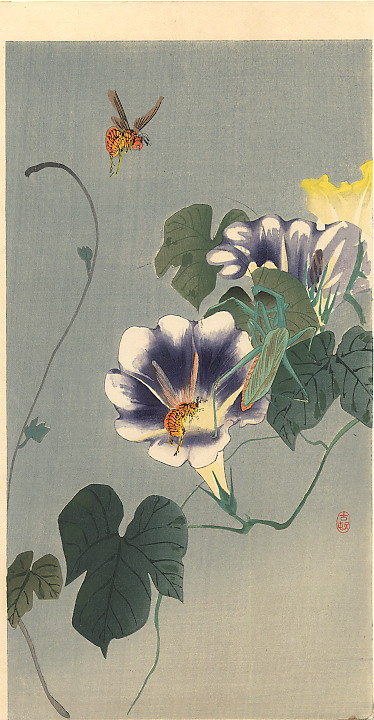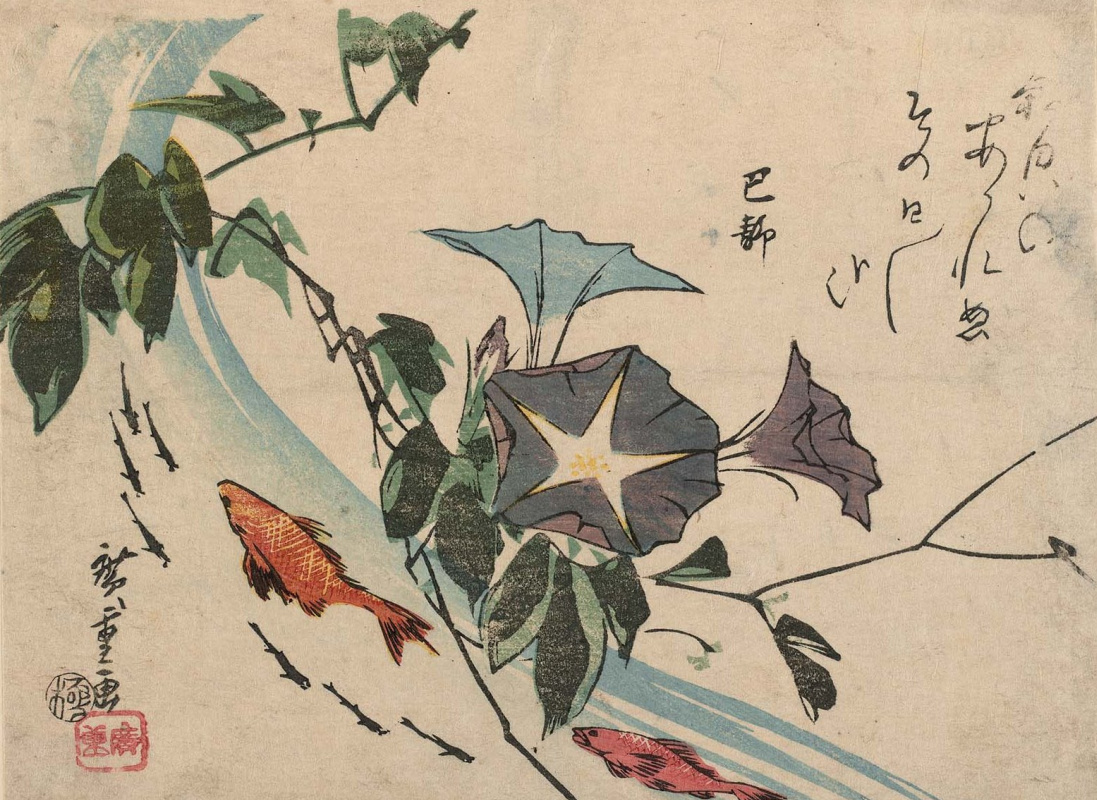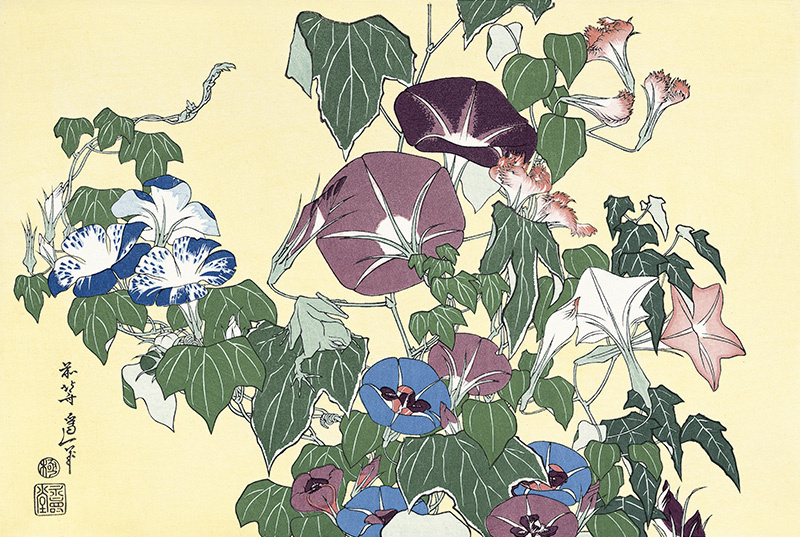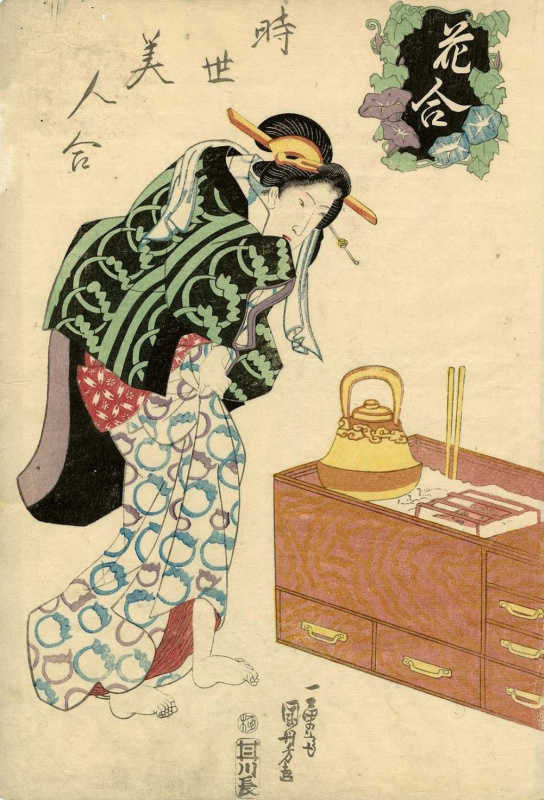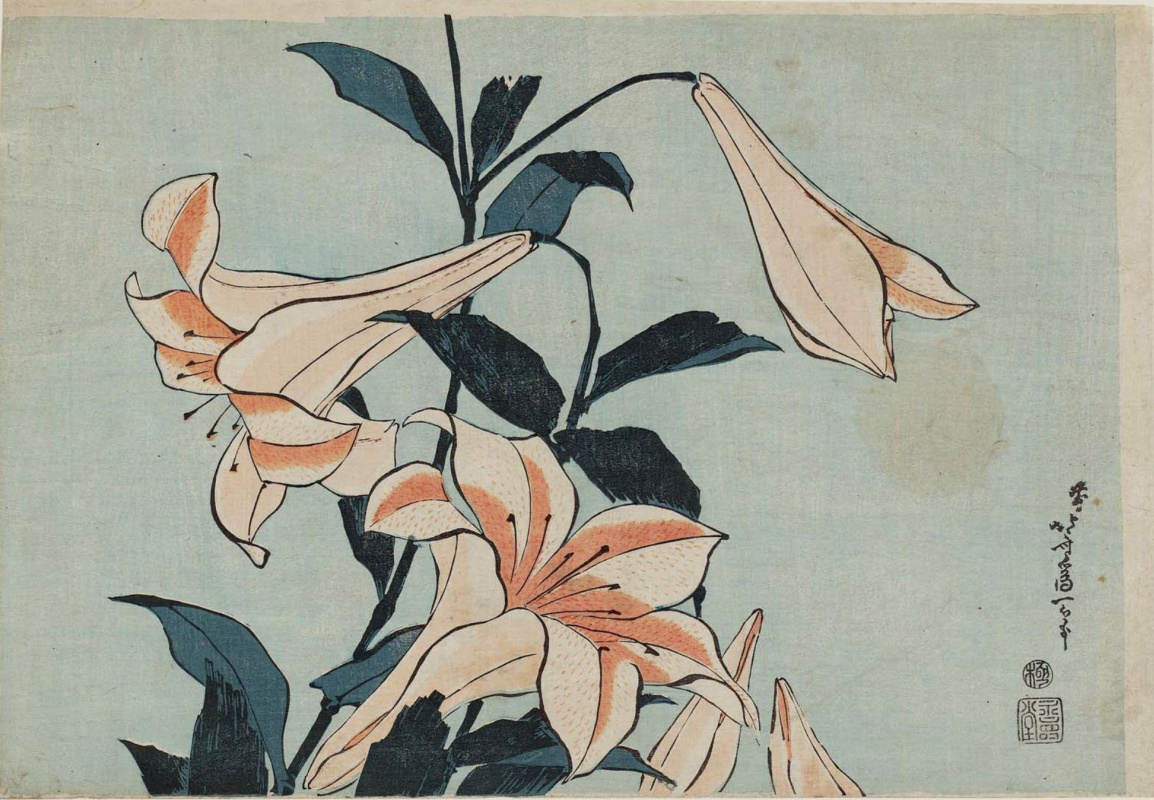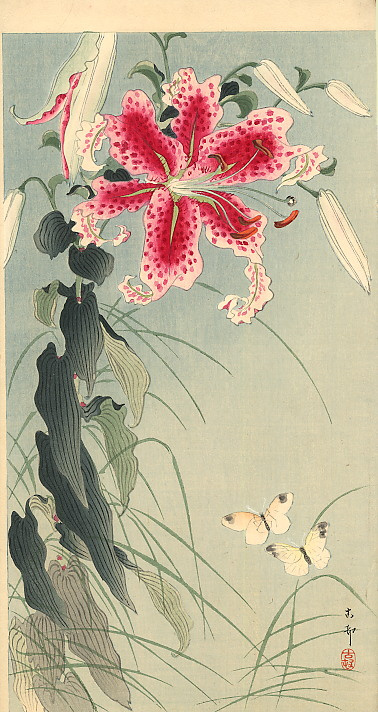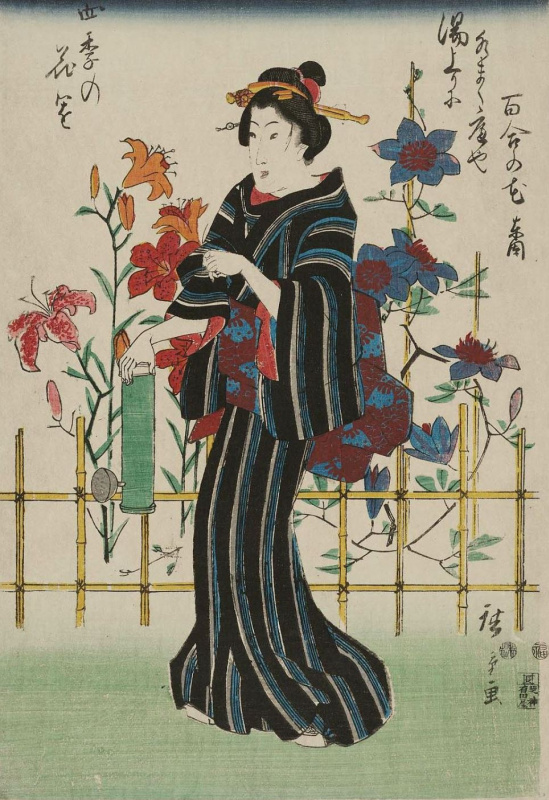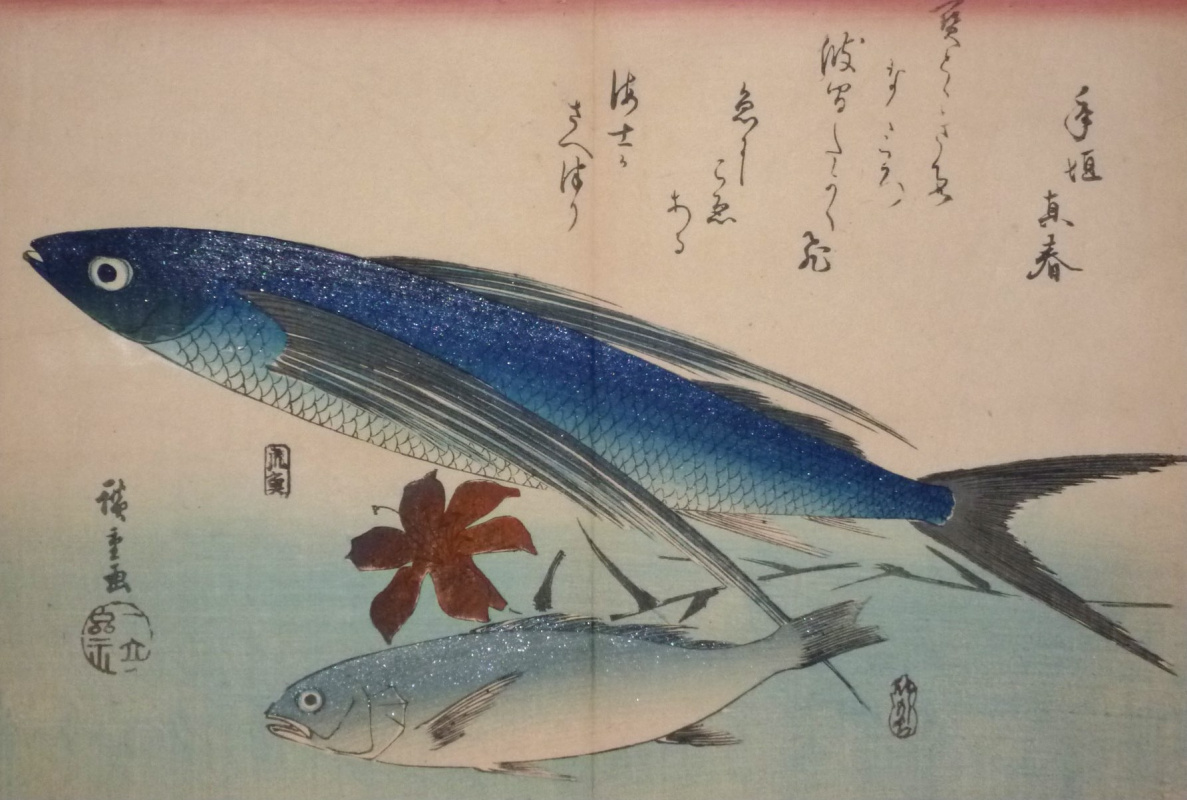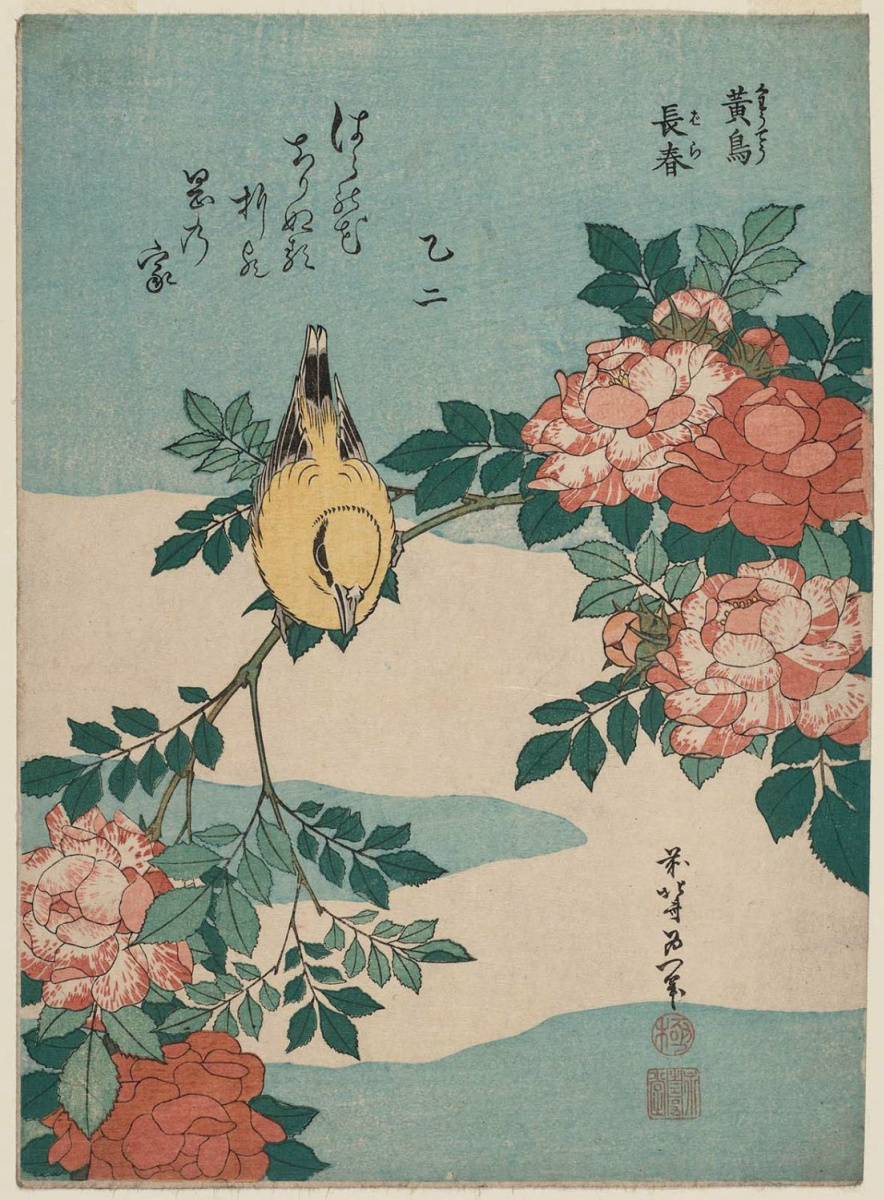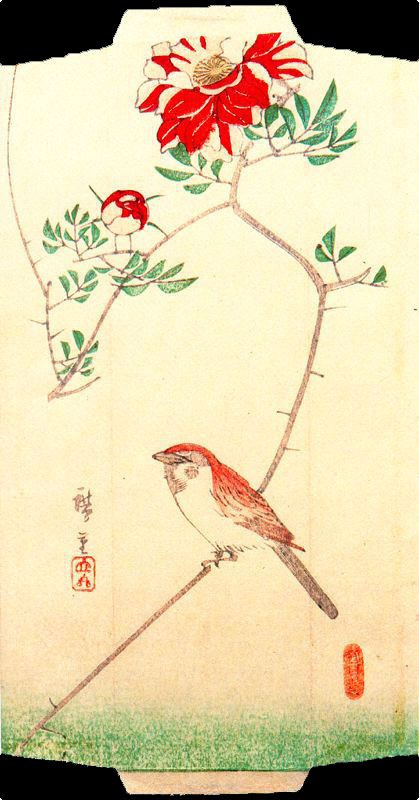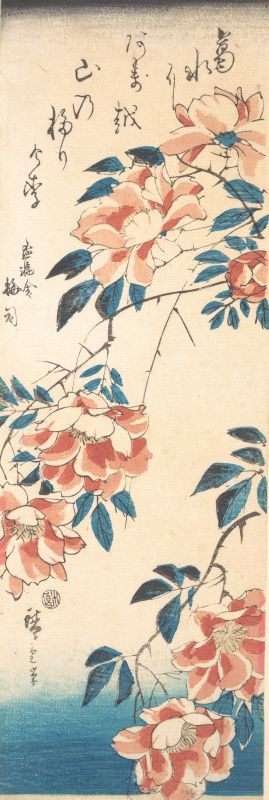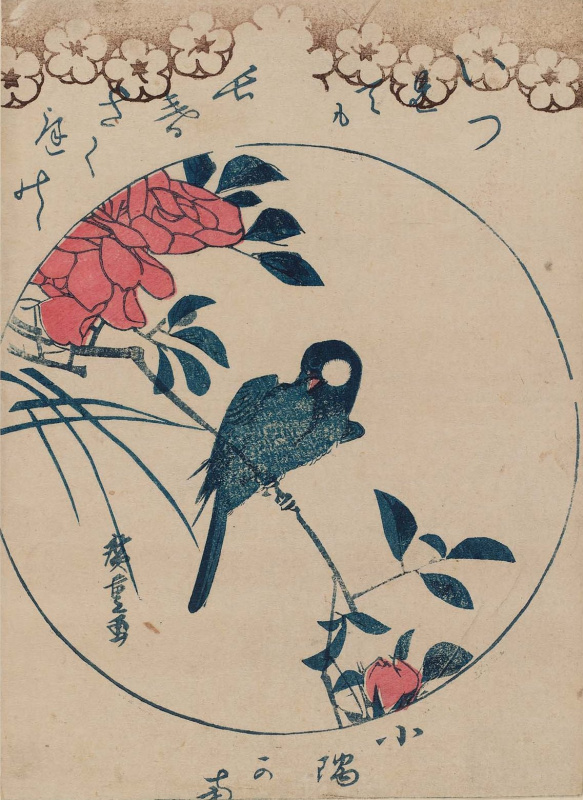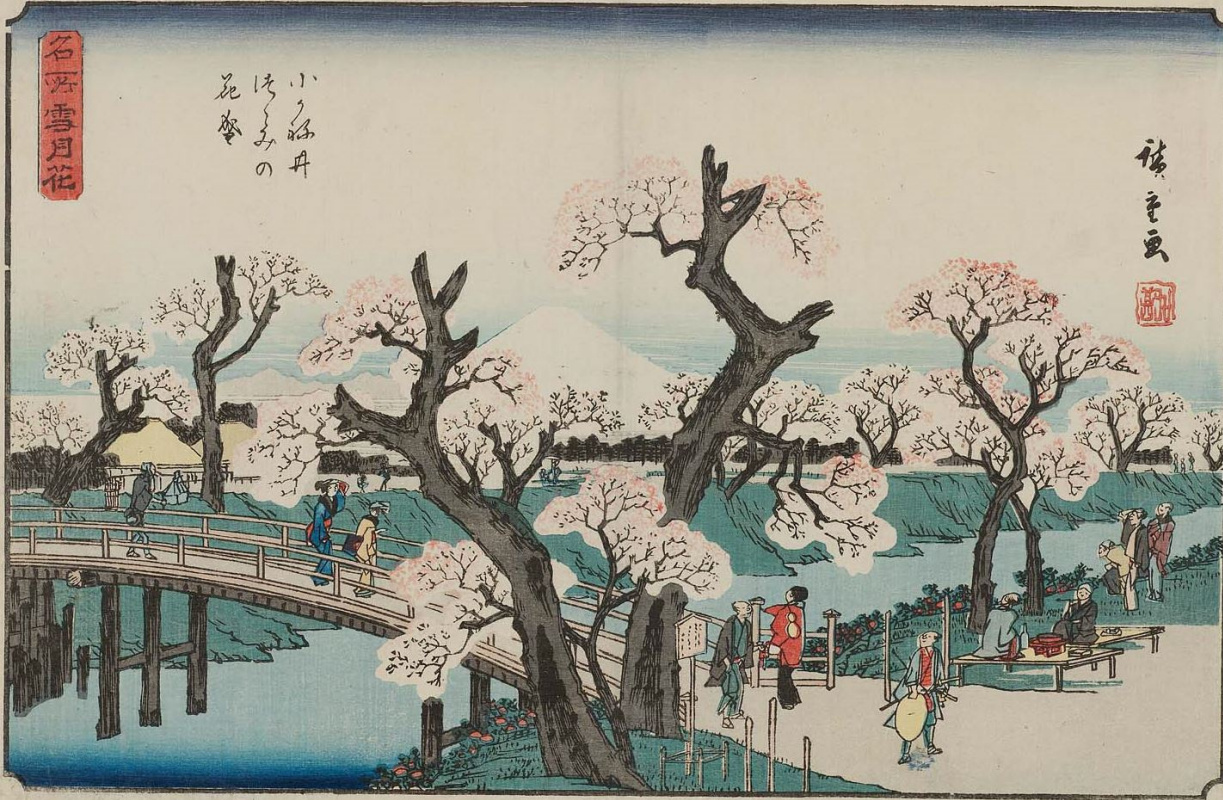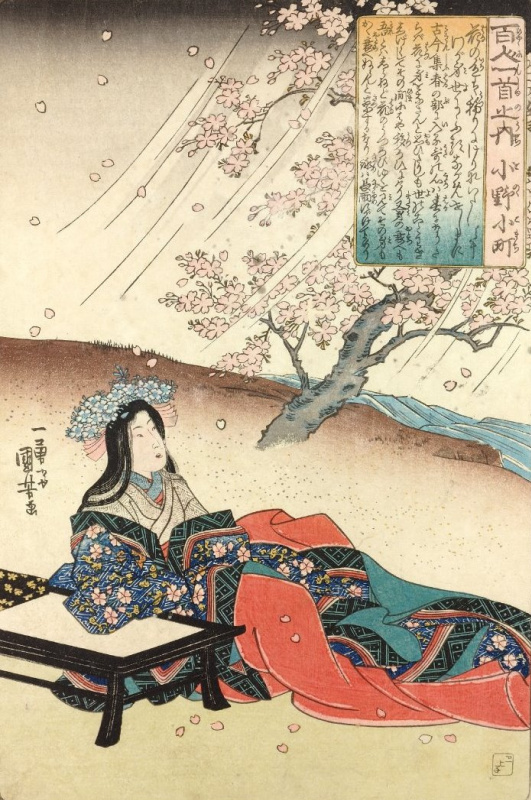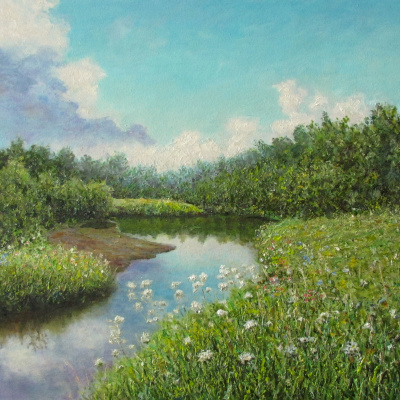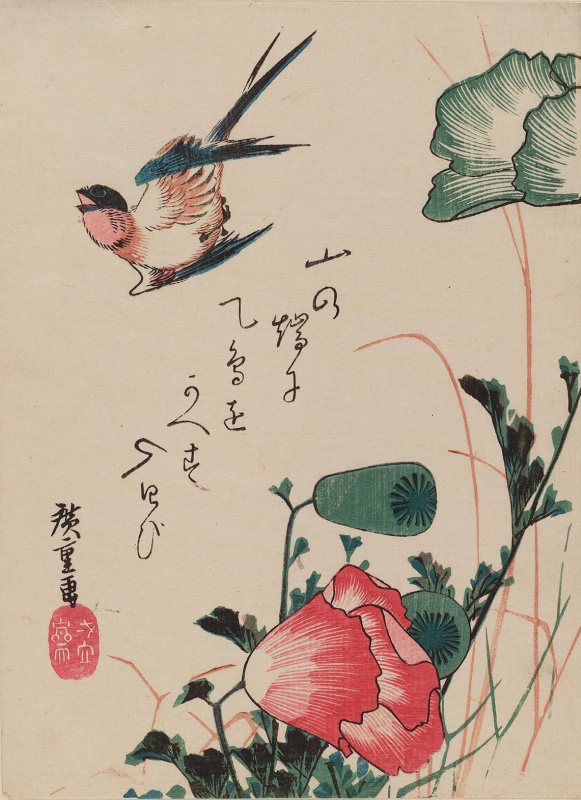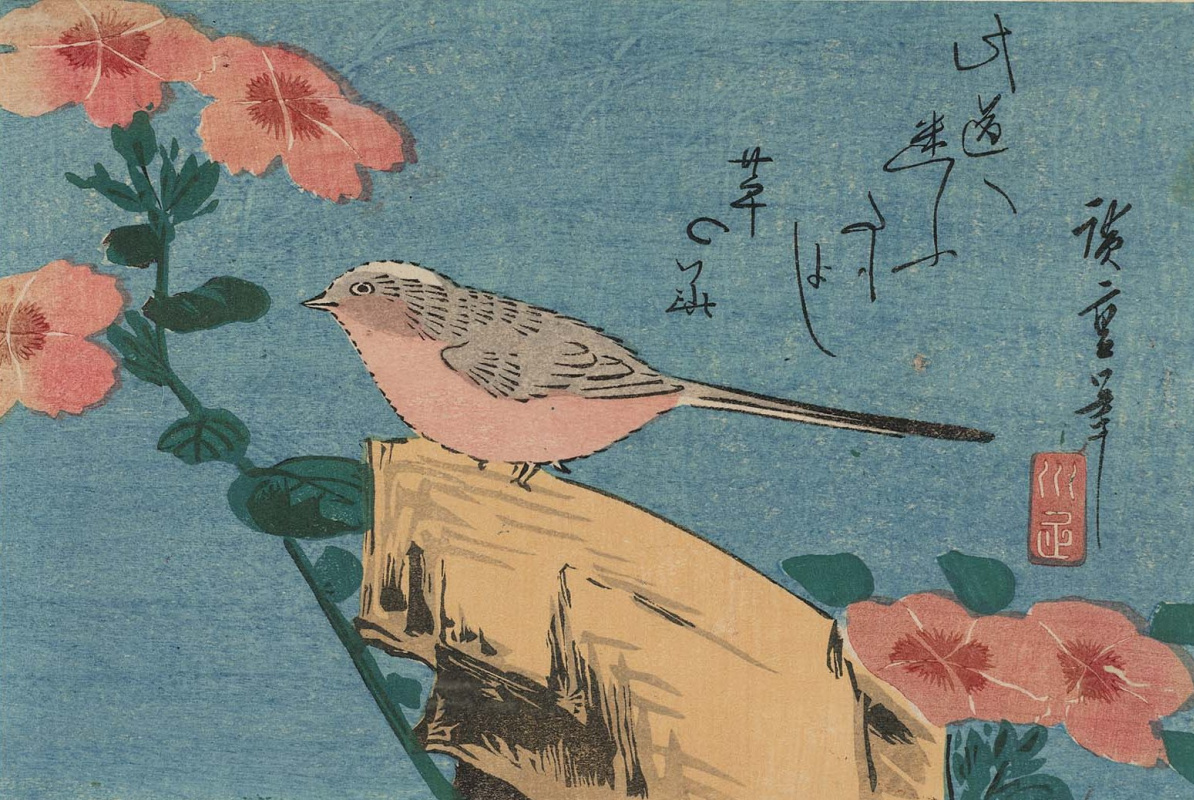The Japanese have a special relationship with flowers: almost every month of the year is dedicated to festivals admiring the blooming of a tree or a flower. And what kind of plants represented in Japanese art more often and for what they are so privileged? It is better to see once. Especially there is something worth watching.
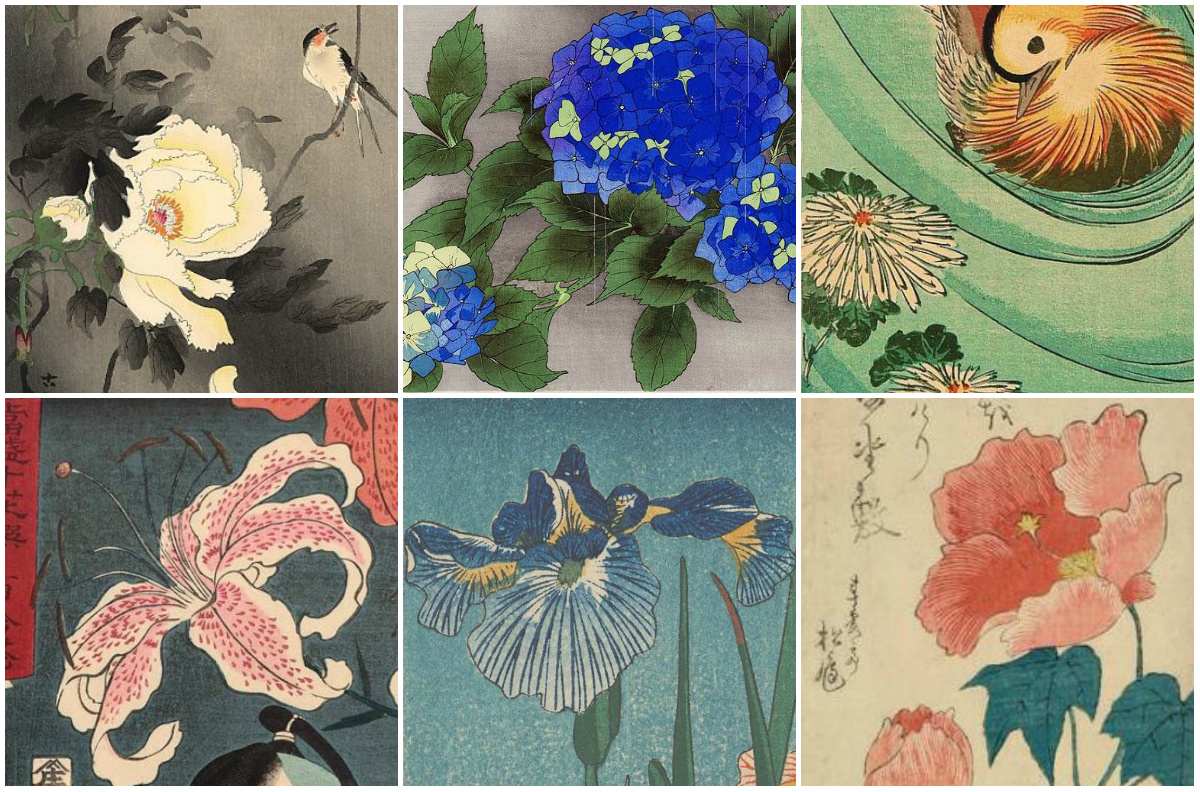
Chrysanthemums (Kiku)
An autumnal frost resistant type — the second highest blooming plant in Japan (after Sakura). Its importance and symbolism has embedded in the name itself: Chrysanthemum in Japanese is written in the same way as the source of all life on earth — the sun. Furthermore, the chrysanthemum of 16 petals for many centuries is the Imperial Family Seal. In the absence of the state emblem this Seal is used on the coins, the covers of Japanese passports, postage stamps, in diplomatic institutions and so on. And the most honorable award of the country, which can only receive its subject, is called the Order of the Chrysanthemum.Chrysanthemums fill
the garden where the days are passed
by Your Majesty—
so "Grotto of the Holy Sage,"
the palace name, fits very well
Saigyō
the garden where the days are passed
by Your Majesty—
so "Grotto of the Holy Sage,"
the palace name, fits very well
Saigyō
100 varieties of chrysanthemums grafted together
1847, 37.1×50.2 cm
Peonies
Historians date the arrival of the tree peonies in Japan from China to the 8th century CE. They were brought by Buddhist monks. Flower gained very soon nationwide recognition and became an elite culture, which originally was to be found only in the gardens of the highest nobility. It was cultivated in every way, there were created clubs everywhere, which were engaged in breeding of its unique varieties and strictly complied, and guarded the established standards. It was forbidden to export this plant out of the country, and only at the end of the feudal period, when Japan became more open to foreigners, tree peonies began to appear in Europe. And pion flower growers-amateur's clubs, although lost its former elitism, exist and flourish to this day.Wild peonies
Now at their peak in
Glorious full bloom.
Too precious to pick.
Too precious not to pick.
Ryōkan
Now at their peak in
Glorious full bloom.
Too precious to pick.
Too precious not to pick.
Ryōkan
Triptych: Night contemplation of blooming peonies
1852, 36.2×74.5 cm
Hydrangeas
The appearance of the flower, which Japanese call "ajisai", according to legend, is associated with the Buddha’s Birth: on this day the heavens poured down rain of beautiful flowers and drops of sweet nectar ama-cha. Therefore, when the Buddha’s birthday is celebrated at Buddhist temples, there are brewed a huge capacitance with tea of hydrangeas and invited everyone to have tea. It is believed that the ama-cha, meaning sweet tea, is able to protect from evil spirits and poisonous insects, and snakes. Before sugar was appeared in Japan, there was used syrup of hydrangeas instead. By the way, the name hortensia, the European name of the flower "ajisai", was first used by French scientist Philibert Commerson. Faced with an unfamiliar plant during the world trip in 1767, he was so fascinated by its beauty that he called a new kind of flower for European in honor of his beloved Hortensia.Even in summer’s tedium
my heart is moved;
The moon mirrored
in the dewdrops
on four hydrangea petals.
Fujiwara no Shunzei
my heart is moved;
The moon mirrored
in the dewdrops
on four hydrangea petals.
Fujiwara no Shunzei
Rooster and hen on the background of hydrangeas
XVIII century, 140×85 cm
Irises
Due to the sharp sword-like leaves, iris had long been revered in Japan as the flower of the samurai. Now it is the main symbol of Boys' Festival, which is celebrated on May 5th. This is a day for families to celebrate their sons' strength and character. On this day, irises appear in every home, where there are growing up representatives of male, in any form: from the image on the toy armor and ending with a traditional dessert in the shape of a flower. Already since the 9th century irises were grown in the Imperial Parks and temple buildings, and in the 17th century, the admiration of blooming irises was amusement, affordable and to mere mortals. Now, in the midst of their blooming, tourists come from all over the world to Japan on the festivals, because here there were deduced hundreds of different types of flower most every possible shades and shapes.I will bind iris
Blossoms round my feet―
Cords for my sandals!
Bashō
Blossoms round my feet―
Cords for my sandals!
Bashō
Wagtail and iris. Series "Birds and flowers"
1830-th
, 10.2×15.7 cm
Hibiscuses
In Japan, there are different types of hibiscus: Sui-Fuyo, also known as wood lotus, and mukuge, known as the Syrian hibiscus. Due to the properties of the plant — disease resistance and long blooming period (from July to October) — it is revered as a symbol of resistance and vitality. And because it gives a lot of new inflorescences, constantly replacing each other throughout the season, hibiscus also symbolizes abundance.Rose of sharon:
in the hair of a naked child
a spray of flowers
Bashō
in the hair of a naked child
a spray of flowers
Bashō
Camellias
Another symbol of resistance and longevity, because of its ability to withstand even harsh frosts. At first there were of the view that camellia is a flower of samurai, and only Japanese warriors were allowed to grow it or to adorn themselves. But the tradition was interrupted by the superstition that camellia brings samurai misfortune: allegedly if they touch it, they will risk of losing their heads, literally. Among other things, from ancient times this flower was a symbol of the sun goddess of the Shinto religion, Amaterasu. But after appearance Christianity in Japan, camellia began to be used instead of a cross, which was forbidden to wear by local Christians.Camellia-petal
fell in silent dawn. . .
spilling
A water-jewel
Bashō
fell in silent dawn. . .
spilling
A water-jewel
Bashō
Wisterias
Wisteria’s gardens of wide variety of shades are one of the most popular and the most exciting tourist attractions of Japan. The symbol of elegance, youth and grace in Japanese is called as well as the sacred Fuji Mountain — Fuji tree. According to local legend, a goddess named Fuji-hime (or Konohanasakuya-hime) lives on the mountain, enclosing it from desecration. Her souvenir figure, which can be purchased in tourists' shops, traditionally depicted with a branch of wisteria on the shoulder.I left the image of wisteria blossoms
softly reflected in the pond,
because it looked so fragile
it could vanish only with a slightest touch.
Nevertheless, the waves came and destroyed the image.
Oshikochi Mitsune
softly reflected in the pond,
because it looked so fragile
it could vanish only with a slightest touch.
Nevertheless, the waves came and destroyed the image.
Oshikochi Mitsune
Triptych: koi, floating under the hanging branches of Wisteria
1889, 73.6×35.5 cm
Ipomoea (Morning glories)
Like many things, ipomoea (morning glory) came from China to Japan — as the medicinal culture. The flower became particularly popular during the Edo period. That’s when Japanese people got carried away by the breeding new varieties of plants, experimenting with shades, size and shape of of inflorescences. Because the blossomed flower is short-lived and rapidly fades, being ripped off, he fit into the Buddhist philosophy of the fragility and flowability of life in the best possible way.Morning glory!
the well bucket-entangled,
I ask for water
Chiyo-Ni
the well bucket-entangled,
I ask for water
Chiyo-Ni
In the garden with flowers Ipomoea
1852, 37.6×25.5 cm
Lilies
Initially attitude to the flower, imported from Europe, was unenviable: it was considered too bright and flashy and symbolized the provincial and bad taste. For the Japanese, who valued elegance and delicacy, much of this plant was excessive: the flavor, the size of inflorescences. But over time, the symbolism of lilies and associations with strangers was gradually relegated to second place, and with a change in foreign policy in the 19th century, it became to mean the country’s openness to contacts with the outside world. They were beginning to depict lilies as a pattern on garments and household items.Your love for me
My love for you
Love indistinguishable
Whether you are the white bush clover…
Whether I am the white lily…
Yosano Akiko
My love for you
Love indistinguishable
Whether you are the white bush clover…
Whether I am the white lily…
Yosano Akiko
Lily
1833, 25×36.1 cm
Roses
Wild rose varieties were popular since time immemorial, and in the XII century it came from China as a garden culture. When the European varieties appeared in the Edo period in Japan, it caused quite a sensation. As in our tradition, the rose is one of the noble plant, and the symbolism of it is similar: it is the flower of love. Certain analogies can be identified even by the color values: rose of deep red color means passion, white — innocent or first love, pink — indecisive, modest-hearted love.This morning,
I first saw the flower.
How attractive the colour of
that flower was!
The Rose!
Ki-no-Tsurayuki
I first saw the flower.
How attractive the colour of
that flower was!
The Rose!
Ki-no-Tsurayuki
Warbler and Roses
1828, 24.1×19 cm
Japanese cherry blossoms (sakura)
Hors concours is the popularly favorite in Japan Sakura (of course it is). So much is written and said about the significance of cherry blossoms for citizens of country. The period of beginning of flowering trees is monitored by special meteorological reports in one or another of its points to know when it is possible to spend hanami — the traditional favorite picnic under the shadow of fragrant Sakura. There is even a Japanese Association Sakura (like there is any doubt), released the top 100 gardens and parks for admiring its blossoming in all corners of the country. Gentle light shines down
from the eternal heavens,
so on this spring day
why do the cherry blossoms
scatter with such restless hearts?
Ki no Tomonori
from the eternal heavens,
so on this spring day
why do the cherry blossoms
scatter with such restless hearts?
Ki no Tomonori
Blooming cherry trees on the promenade in Koganei
1848, 24.6×37.3 cm
And like bonus is a scattering of other exquisite flowers in Japanese art. Just because it’s beautiful.
Even thistle exits unusually beautiful in the vision of the Japanese masters of ukiyo-e .
Crossbill And Thistle
1834, 46.9×36.1 cm
Birds are not be so favourite in Japanese culture, like flowers. They are often depicted to be paired only to set off the beauty and elegance of the plants. For example, azaleas.
Cuckoo and Azaleas
1828, 25.8×18.6 cm
A genre of Japanese prints, devoted to images of birds and flowers, is called kachō-e (or bird-and-flower painting). Birds flew here to emphasize the beauty of the carnations, poppies and clover.
Author: Natalia Azarenko







